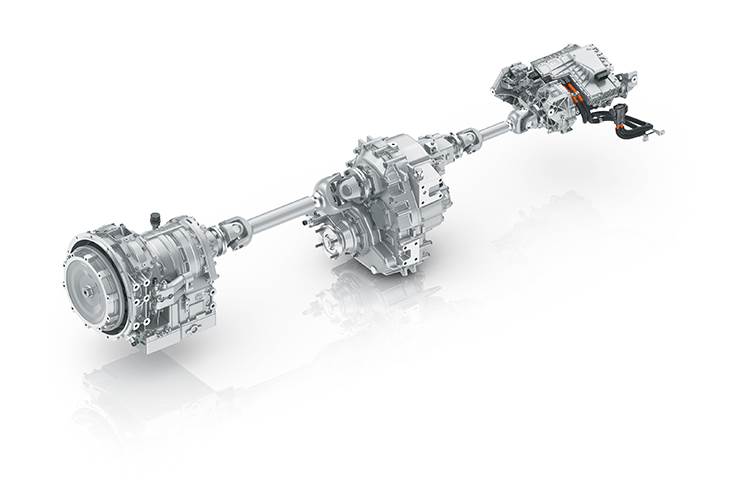Japan The businessman should have been kept in jail, prosecutors claim, because he had ‘financial power and foreign bases’ Journalists crowd outside a house in Beirut thoughtto be where former Nissan chief Carlos Ghosn has been living since leaving Japan. Photograph: Anwar Amro/AFP via Getty Images Carlos Ghosn should have been kept in jail because… Continue reading Carlos Ghosn’s network of influence made it ‘easy to flee’ Japan, say prosecutors
Tag: Renault
@Mitsubishi:Mitsubishi Motor Sales of Canada reported 25,535 vehicles sales in 2019
Jan 03, 2020 ID: 16006 Immediate Release 2019 Highlights Best year on record Eclipse Cross sales best on record Eclipse Cross sales up 42% RVR sales up 20% Outlander sales up 10% Mississauga, ON – Jan. 3, 2020 – Mitsubishi Motor Sales of Canada reported 25,535 vehicles sales in 2019 surpassing last year’s sales record. The… Continue reading @Mitsubishi:Mitsubishi Motor Sales of Canada reported 25,535 vehicles sales in 2019
@Mitsubishi: Mitsubishi Motors Reports Best Annual Sales Since 2007
In December 2019, MMNA recorded sales of 9,915 units, up 10.3 percent over December 2018. “Sales figures are obviously one key metric for any brand, and by that measure, 2019 was a year of great success and growth at MMNA,” said Fred Diaz, President and CEO, MMNA. “But we have so much more to celebrate… Continue reading @Mitsubishi: Mitsubishi Motors Reports Best Annual Sales Since 2007
@Nissan: Nissan Group reports December 2019 and 2019 calendar year U.S. sales
January 3, 2020 2019 2018 % chg Total December sales (units) 104,781 148,720 -29.5 Nissan Division sales 93,538 130,655 -28.4 INFINITI sales* 11,243 18,065 -37.8 Calendar Year Total Sales (units) 1,345,681 1,493,877 -9.9 Nissan Division sales 1,227,973 1,344,597 -8.7 INFINITI Sales* 117,708 149,280 -21.1 NASHVILLE, Tenn. – Nissan Group announced total U.S. sales… Continue reading @Nissan: Nissan Group reports December 2019 and 2019 calendar year U.S. sales
Mitsubishi Motors Reports Best Annual Sales Since 2007
In December 2019, MMNA recorded sales of 9,915 units, up 10.3 percent over December 2018. “Sales figures are obviously one key metric for any brand, and by that measure, 2019 was a year of great success and growth at MMNA,” said Fred Diaz, President and CEO, MMNA. “But we have so much more to celebrate… Continue reading Mitsubishi Motors Reports Best Annual Sales Since 2007
Former Nissan Executive’s Home Raided While Interpol Issues Arrest Warrant
Japanese prosecutors raided the Tokyo home of former Nissan Chairman Carlos Ghosn Thursday while the international police organization Interpol submitted a warrant for his arrest to Lebanese authorities.Japanese media reported earlier that there were no official records in Japan of Ghosn’s departure and that a private jet departed from a regional airport to Turkey.Turkey’s state-run Anadolu News Agency reported Thursday that authorities investigating Ghosn’s travels from Japan to Istanbul had arrested seven people, including four pilots, a cargo company manager and two airport employees.
ZF partners MKR Technology to reveal new hybrid driveline at 2020 Dakar Rally
ZF, in cooperation with MKR Technology, has fitted the Riwald Dakar team’s Renault C640 with a new driveline developed especially for the 42nd Dakar Rally to be held from January 5 at Jeddah, Saudi Arabia. It is claimed to be the first-ever hybrid-powered off-road truck in the Dakar Rally. ZF has revealed that the core… Continue reading ZF partners MKR Technology to reveal new hybrid driveline at 2020 Dakar Rally
@Renault: SALES RESULTS, FRANCE 2019
Download Conditions All materials on this website are the sole property of Renault SAS and/or of its subsidiaries or of any third party having granted Renault SAS permission to use them. Please note that these materials are for editorial use only. Commercial use, including advertising, marketing and merchandising, is strictly prohibited. All trademarks are the… Continue reading @Renault: SALES RESULTS, FRANCE 2019
Carlos Ghosn prepares to speak as Japan comes to terms with saviour who fled
Japan Wife dismisses reports husband escaped inside an instrument case as world awaits full explanation from fugitive Carlos Ghosn and his wife Carole in Tokyo last year. Photograph: Kazuhiro Nogi/AFP/Getty Images The world will have to wait until next week for what could be the only definitive account of how Carlos Ghosn managed to leave… Continue reading Carlos Ghosn prepares to speak as Japan comes to terms with saviour who fled
Ghosn to hold press conference in Beirut on Jan.8, lawyer says
BEIRUT (Reuters) — Nissan ex-boss Carlos Ghosn will hold a news conference in Beirut on Jan. 8, a lawyer for Ghosn said on Wednesday, two days after abruptly arriving from Japan, where he was under house arrest and accused of financial misconduct. The circumstances surrounding Ghosn’s escape from Tokyo remain mysterious. Go to Source
